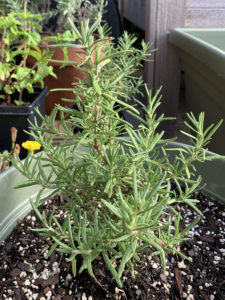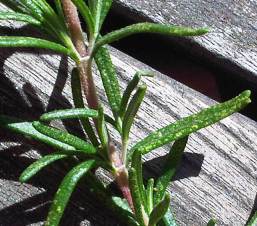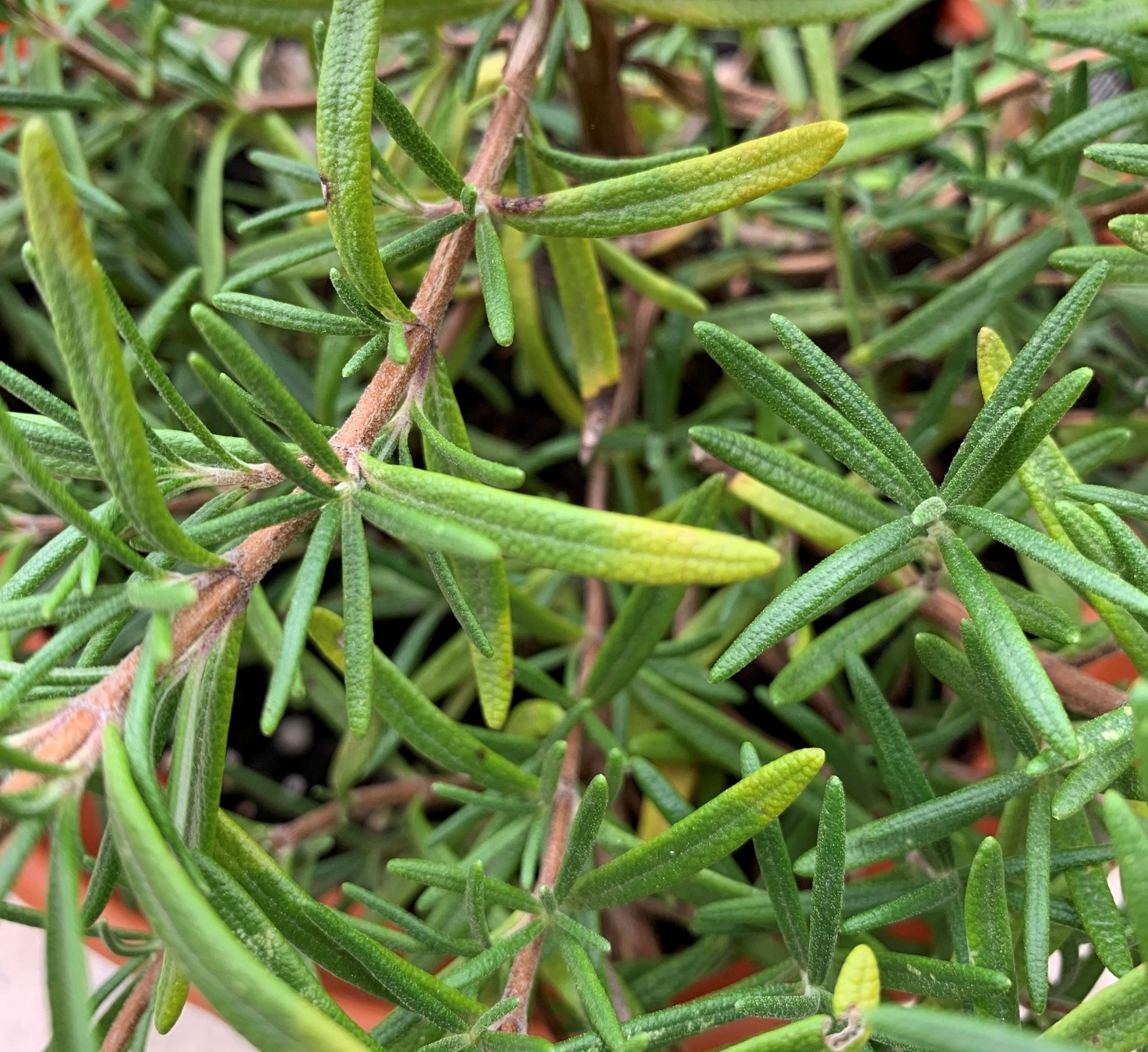Rosemary is a relatively low-maintenance plant that is easy to grow. It requires full sun, sandy to loamy soil, and less water than basil, its mint-related cousin. But when rosemary does require attention, it is usually because its needle-like leaves are turning yellow. This post is designed to help you determine the cause of yellowing leaves and what you can do to remedy the situation.
1. Overwatering or High Humidity
Perhaps the number one cause for yellowing leaves is overwatering or extended periods of high humidity. As a native of the Mediterranean, rosemary is drought tolerant and, once it is established, requires less watering. It is well-suited to climates with less rainfall and more arid conditions.
To remedy the problem, allow the soil to dry out somewhat before watering it thoroughly. Depending on the size of the plant and the soil type, this may mean watering only once every two weeks. If the plant is growing in a container, it will require more frequent watering than if it was in the ground. However, it will still need to dry out somewhat before watering. If it is planted where it is watered by the lawn sprinkler, you may need to transplant it to a place out of the sprinkler’s reach.

2. Poor Draining Soil
If you are watering properly but the leaves are yellowing it could be because the soil is not draining well. Reasons for water retention include clay or compacted soil, or low-lying areas.
If the area it is planted in has slow-draining soil, you can add a bit of horticultural sand. Otherwise, you may need to relocate the plant to an area that drains properly like a slope where the water can drain off.
If planted in containers, make sure there are adequate holes in the bottom of the container for drainage.
This article contains affiliate links. If you make a purchase using one of these links, I will receive a very small commission at no additional cost to you, and it will help me maintain this website. Rest assured, I only recommend products I actually like!
3. Too Much Nitrogen
Typically, when a plant’s leaves are yellow it can be a sign that it needs nitrogen. The lower leaves of a broccoli plant, for example, begin to turn yellow when there is a deficit of this important macro-nutrient. But with rosemary, the opposite is true. When there is too much nitrogen in the soil, say from adding too much compost or from using a fertilizer that is high in nitrogen, rosemary leaves will turn yellow.
If growing in the ground, rosemary should only need a balanced fertilizer once in the spring as you enter the growing season. If growing in containers, it should only need it on occasion.
4. Container is Too Small
If your rosemary is growing in a container that is too small, not only will the roots become bound, but they will also become nutrient deficient because there is not enough soil available to draw nutrients from. What’s more, the soil will not be able to retain enough moisture to water the plant.
Transfer the plant to a container that is at least twice the diameter of the one it is currently in. Add new or refreshed potting mix and water. The plant may experience a bit of transplant shock, but it should rebound soon.

5. Not Enough Sun
You may be surprised to find that inadequate sun can also be a cause for yellowing leaves. Rosemary requires at least six hours, preferably more, of full sun. If it is growing in a container, simply move it to a location with more sun exposure. If it is in the ground, transplant it to a more favorable location. Due to a bit of transplant shock, the plant may take a while to appreciate its new home. But it should green up in a few weeks.
6. Insect Pests
Sometimes pests or insects can cause leaves to turn yellow or have yellow or white stippling. The primary culprits include spider mites, whiteflies, aphids, leafhoppers, and mealybugs. Follow the links to find helpful articles on how to deal with these pests organically.

Rosemary and Improper Soil pH?
One final thought. Many plants that do well in acidic soils may experience chlorosis, a condition where the leaves do not produce sufficient amounts of chlorophyll. Chlorosis is characterized by yellow leaves with green veins. The condition is ultimately the result of soil that is too alkaline and thus, not able to take up nutrients. Rosemary, however, is not usually affected by alkaline soil since it can grow in a wide range of soil pH, even up to 8.3. Therefore, the problem is probably not one of soil pH. If you want to make sure, you can easily perform a quick soil pH test.
You can learn more about how to grow rosemary in this helpful article.
Thank you for reading this article! If you found it helpful, please consider sharing it with others via email and social media!

